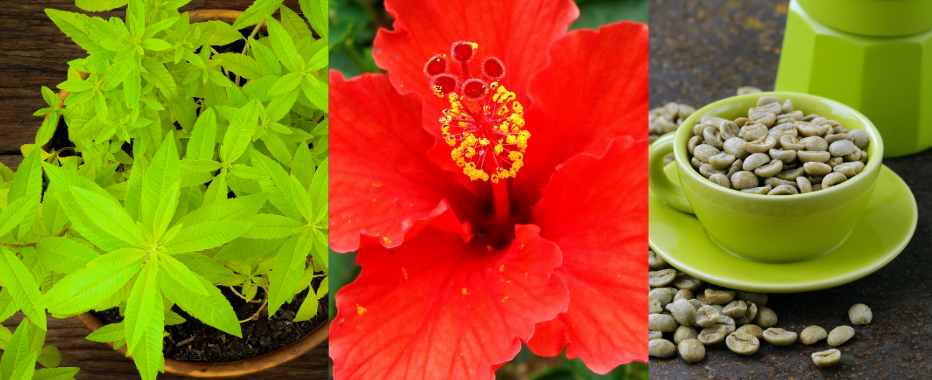Obesity has become a global epidemic over the past few decades. In the United States alone, 69% of adults are categorized as overweight or obese, and 36% of the adult population qualifies as obese.1 These obesity rates mirror the industrialization of the food supply. The food industry has deviated so far from a whole-food diet that ultra-processed foods constitute most of the calories consumed in the modern diet.2
While dietary changes are necessary to address the obesity epidemic, there are many other causative factors for excessive weight gain. Those other factors will not be expanded upon in this blog post for brevity’s sake, but they are covered in this article.3 Fortunately, new research on plant polyphenols shows promise for supporting healthy and sustainable weight loss.
Health Conditions Related to Obesity
The primary issue with a person carrying excessive weight is that it increases the risk of co-morbidities and all-cause mortality. Obesity increases the risk of several health conditions that can significantly impair quality of life and increase health
care costs. The most common co-morbid conditions include the following:
- Type 2 diabetes mellitus
- Hypertension
- Coronary heart disease
- Cerebrovascular event
- Gallbladder disease3
- Non-alcoholic fatty liver disease
- Kidney disease
- Certain cancers4
- Respiratory issues
- Sleep apnea
- Osteoarthritis3
Weight Loss Challenges
For health reasons, weight loss is imperative for those carrying excess weight, but most people are unsuccessful at maintaining the lost weight. The typical weight loss pattern with diet and exercise is rapid early weight loss, a weight-loss plateau and
then a progressive weight rebound.2 The physiological cause for this pattern is called the “energy gap.”
The energy gap refers to a decrease in basal metabolic rate with an increase in the hunger signal ghrelin. Weight loss decreases basal metabolic rate because there is less physical mass that the body needs to maintain. The peripheral signals from the loss of energy reserves (adipose tissue) and the prolonged calorie deficit signal the hypothalamus to stimulate the release of ghrelin.5 It is estimated that for every kilogram (2.2lb) of weight lost, energy expenditure decreases by 20-30 calories per day, but appetite increases by 100 calories per day.2 This phenomenon causes most weight loss attempts to fail eventually.
Benefits of Plant Polyphenols for Weight Loss Maintenance
Certain plant phenolic compounds have the potential to circumvent weight loss failures caused by the energy gap. Polyphenols are a large family of plant-based antioxidants that have therapeutic potential. With over 8,000 polyphenol compounds, individual plant species have unique compositions of polyphenol content.6 Combining specific plants high in polyphenols can have synergistic physiological effects to support weight loss efforts through the modulation of hunger and satiety signals.
Hibiscus
Hibiscus is a flowering plant traditionally used in Asian cultures primarily for high blood pressure. In addition to its effects on blood pressure, hibiscus constituents have strong antioxidant and anti-inflammatory activity.7 Hibiscus
can support weight loss efforts through several actions, including inhibiting the absorption of dietary carbohydrates and fat.8 Likely, the strongest weight loss activity of hibiscus involves the activation of the enzyme AMPK (5' adenosine
monophosphate-activated protein kinase).9
AMPK is a key enzyme in metabolism physiology. Activation of AMPK promotes weight loss through the following mechanisms:
- Increases basal metabolic rate
- Stimulates the biogenesis and activity of mitochondria in cells
- Boosts physical endurance4
- Promotes lipolysis and fatty acid oxidation
- Inhibits lipogenesis and gluconeogenesis10
Lemon Verbena with Hibiscus
Lemon verbena is another plant high in polyphenols, with the most active constituent being verbascoside, which can activate AMPK.11 Plant polyphenols can have synergistic activity when used together in formulas. In an in vitro adipocyte cell
culture study, the combination of lemon verbena and hibiscus extracts increased AMPK activity by 50% compared to the control adipocyte cells.10
Possibly the most intriguing outcome of combining lemon verbena and hibiscus is the decrease in ghrelin and increase in GLP-1 (glucagon-like peptide-1), the satiety hormone, as seen in a double-blind, placebo-controlled, five-month trial.9 An increase in GLP-1 without an increase in ghrelin could be the key to addressing the energy gap that impedes long-term weight loss success.
Green Coffee Bean Extract
Another potential therapeutic intervention to support healthy weight loss is green coffee bean extract. “Green” specifies that the coffee beans are unroasted, which preserves polyphenols, such as the most active constituent in coffee beans,
chlorogenic acid.12
Green coffee bean extract supports weight loss efforts through several mechanisms. It inhibits glucose absorption in the intestines, increases GLP-1 levels and stimulates AMPK activity.12,13 It also has analgesic effects,14 possibly due to the inhibition of upstream inflammatory markers like TNF-α (tumor necrosis factor alpha) and IL-6 (interleukin 6), which could be helpful for those unable to support weight loss through physical activity due to joint pain.13
The Bottom Line
The three plant extracts high in polyphenols discussed in this blog post have been potentially shown to support healthy weight loss in research. Long-term weight loss success is dependent upon supporting patients through the energy gap and hunger stimulation that causes gradual weight regain. Hibiscus, lemon verbena and green coffee bean extract all have the potential to support weight loss efforts, especially when used in combination to enhance their activity through herbal synergy.

Megan Borreson, ND is the CM Vitals and WellMatrix Clinical Brand Manager at Lifestyle Matrix Resource Center. She attended undergraduate school at the University of Wisconsin–Eau Claire and received her Bachelor of Science degree in cell biology and a Bachelor of Arts degree in Spanish with a minor in chemistry. Dr. Borreson then enrolled at National University of Health Sciences where she graduated summa cum laude with a Master of Acupuncture and Doctorate of Naturopathic Medicine.
References
1. Adult Obesity. Obesity Prevention Source. Harvard T.H. Chan School of Public Health. Published October 21, 2012. https://www.hsph.harvard.edu/obesity-prevention-source/obesity-trends-original/obesity-rates-worldwide/
2. Hall KD, Kahan S. Maintenance of Lost Weight and Long-Term Management of Obesity. Med Clin North Am. 2018;102(1):183-197. doi:10.1016/j.mcna.2017.08.012
3. Apovian CM. Obesity: definition, comorbidities, causes, and burden. Am J Manag Care. 2016;22(7 Suppl):s176-s185.
4. Ojulari OV, Lee SG, Nam JO. Beneficial Effects of Natural Bioactive Compounds from Hibiscus sabdariffa L. on Obesity. Molecules. 2019;24(1):210. Published 2019 Jan 8. doi:10.3390/molecules24010210
5. Boix-Castejón M, Herranz-López M, Pérez Gago A, et al. Hibiscus and lemon verbena polyphenols modulate appetite-related biomarkers in overweight subjects: a randomized controlled trial [published correction appears in Food Funct. 2018 Jul 17;9(7):4037]. Food Funct. 2018;9(6):3173-3184. doi:10.1039/c8fo00367j
6. Pandey KB, Rizvi SI. Plant polyphenols as dietary antioxidants in human health and disease. Oxid Med Cell Longev. 2009;2(5):270-278. doi:10.4161/oxim.2.5.9498
7. Ellis LR, Zulfiqar S, Holmes M, Marshall L, Dye L, Boesch C. A systematic review and meta-analysis of the effects of Hibiscus sabdariffa on blood pressure and cardiometabolic markers. Nutr Rev. 2022;80(6):1723-1737. doi:10.1093/nutrit/nuab104
8. Herranz-López M, Olivares-Vicente M, Encinar JA, et al. Multi-Targeted Molecular Effects of Hibiscus sabdariffa Polyphenols: An Opportunity for a Global Approach to Obesity. Nutrients. 2017;9(8):907. Published 2017 Aug 20. doi:10.3390/nu9080907
9. Serna A, Marhuenda J, Arcusa R, et al. Effectiveness of a polyphenolic extract (Lippia citriodora and Hibiscus sabdariffa) on appetite regulation in overweight and obese grade I population: an 8-week randomized, double-blind, cross-over, placebo-controlled trial. Eur J Nutr. 2022;61(2):825-841. doi:10.1007/s00394-021-02678-x
10. Herranz-López M, Olivares-Vicente M, Boix-Castejón M, Caturla N, Roche E, Micol V. Differential effects of a combination of Hibiscus sabdariffa and Lippia citriodora polyphenols in overweight/obese subjects: A randomized controlled trial. Sci Rep. 2019;9(1):2999. Published 2019 Feb 28. doi:10.1038/s41598-019-39159-5
11. Marhuenda J, Perez S, Victoria-Montesinos D, et al. A Randomized, Double-Blind, Placebo Controlled Trial to Determine the Effectiveness a Polyphenolic Extract (Hibiscus sabdariffa and Lippia citriodora) in the Reduction of Body Fat Mass in Healthy Subjects [published correction appears in Foods. 2020 Mar 03;9(3):]. Foods. 2020;9(1):55. Published 2020 Jan 6. doi:10.3390/foods9010055
12. Morvaridi M, Rayyani E, Jaafari M, Khiabani A, Rahimlou M. The effect of green coffee extract supplementation on cardio metabolic risk factors: a systematic review and meta-analysis of randomized controlled trials. J Diabetes Metab Disord. 2020;19(1):645-660. Published 2020 May 15. doi:10.1007/s40200-020-00536-x
13. Tajik N, Tajik M, Mack I, Enck P. The potential effects of chlorogenic acid, the main phenolic components in coffee, on health: a comprehensive review of the literature. Eur J Nutr. 2017;56(7):2215-2244. doi:10.1007/s00394-017-1379-1
14. Godfrey A, Saunders P. Principles & Practices of Naturopathic Botanical Medicine. Canadian College of Naturopathic Medicine Press; 2012.



